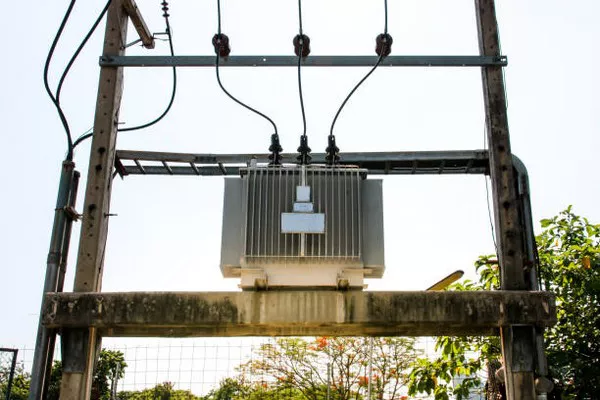In the world of electrical engineering and power distribution, transformers play a critical role in converting voltage levels for efficient transmission and distribution of electricity. Among these transformers, one particularly striking type is the red transformer, known for its distinctive appearance and specific use in power systems. This article explores what the red transformer is, its functions, applications, and significance in the realm of electrical infrastructure.
What is the Red Transformer?
Transformers are devices that transfer electrical energy between circuits through electromagnetic induction. The red transformer, often referred to as a “pad-mounted transformer,” is a specific type of distribution transformer designed for outdoor installation. The distinctive red color is used for safety and visibility, making them easily identifiable in urban and suburban areas.
Design and Construction
Red transformers are typically constructed with robust materials to withstand outdoor conditions. The housing is commonly made of durable metals like aluminum or steel, providing protection against weather elements and vandalism. The bright red color serves as a safety feature, ensuring visibility to maintenance personnel and the public.
Voltage and Capacity
These transformers are designed to step down high-voltage electricity from distribution lines to lower, safer levels suitable for commercial and residential use. They can vary in voltage and capacity based on the specific requirements of the distribution network they serve.
Functions of Red Transformers
Red transformers serve several crucial functions in electrical distribution systems:
Voltage Transformation
The primary function of a red transformer is to convert high-voltage electricity from power lines into lower voltages suitable for consumer use. This transformation reduces the risk of electrical hazards and allows safe utilization in homes, businesses, and other establishments.
Power Distribution
Red transformers facilitate the efficient distribution of electricity from substations to consumers. They ensure that power is delivered reliably and at appropriate voltage levels to support various electrical devices and appliances.
Isolation and Protection
These transformers provide electrical isolation between the distribution network and consumer premises. They also include protective features such as fuses and circuit breakers to safeguard against overloads and faults, enhancing overall system reliability.
Monitoring and Control
Modern red transformers often come equipped with monitoring and control systems that allow utilities to remotely manage and optimize power distribution. This capability improves efficiency, reduces downtime, and enhances the responsiveness of maintenance operations.
Applications of Red Transformers
Red transformers are extensively used in both urban and rural settings for various applications:
Urban Distribution Networks
In cities and towns, red transformers are installed in strategic locations to supply electricity to residential neighborhoods, commercial areas, and industrial zones. They are typically mounted on concrete pads for stability and accessibility.
Commercial and Industrial Facilities
Large-scale commercial complexes, factories, and industrial plants rely on red transformers to receive stable and regulated power supply tailored to their specific energy demands.
Renewable Energy Integration
As renewable energy sources like solar and wind become more prevalent, red transformers play a critical role in integrating these distributed energy resources into the grid. They manage the fluctuations in voltage and ensure seamless integration of renewable power.
Rural Electrification
In rural areas, red transformers enable the extension of electricity supply to remote communities, improving living standards and supporting economic development.
Significance of Red Transformers in Electrical Infrastructure
The presence of red transformers highlights several key aspects of modern electrical infrastructure:
Accessibility and Safety
The visibility of red transformers ensures easy access for maintenance crews while serving as a visual warning to the public about the presence of electrical equipment.
Reliability and Efficiency
Red transformers enhance the reliability and efficiency of electricity distribution, contributing to stable power supply and reducing energy losses across the grid.
Technological Advancements
Advancements in transformer design, such as smart monitoring and diagnostic features, contribute to the resilience and adaptability of electrical networks, supporting the transition towards smarter grids.
Environmental Impact
Efficient distribution facilitated by red transformers promotes energy conservation and supports sustainable practices in electricity generation and consumption.
See Also can transformer work on direct current
Conclusion
In conclusion, the red transformer, or pad-mounted transformer, is a critical component of modern electrical infrastructure. Its distinct color and specialized design signify its importance in voltage transformation, power distribution, and overall system reliability. By understanding the functions and applications of red transformers, we gain insight into the complex network that delivers electricity to homes, businesses, and industries worldwide. As technologies evolve, red transformers continue to adapt, playing a vital role in shaping the future of power distribution towards sustainability and efficiency.

